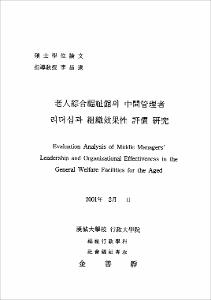老人綜合福祉館의 中間管理者리더십과 組織效果性 評價 硏究
- Files in This Item:
-
-
Download
 000000066019.pdf
기타 데이터 / 3.9 MB / Adobe PDF
000000066019.pdf
기타 데이터 / 3.9 MB / Adobe PDF
-
Items in Repository are protected by copyright, with all rights reserved, unless otherwise indicated.
 000000066019.pdf
기타 데이터 / 3.9 MB / Adobe PDF
000000066019.pdf
기타 데이터 / 3.9 MB / Adobe PDFItems in Repository are protected by copyright, with all rights reserved, unless otherwise indicated.